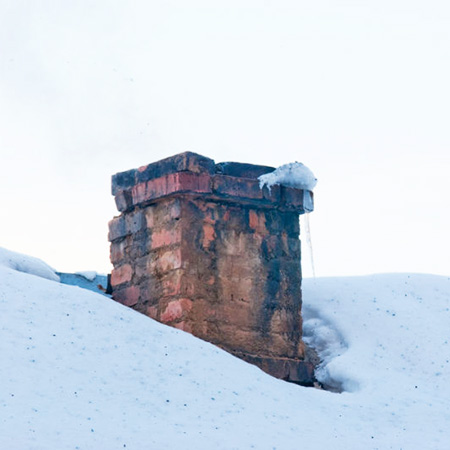How Cold Weather Impacts Your Chimney
The Freeze-Thaw Cycle
 During the cold winter months, many homeowners are lighting up their fireplaces to stay warm while keeping their energy costs down. For many households, it’s as common as making a cup of coffee. But just like we feel the difference when temperatures fluctuate, these changing temperatures influence your chimney too.
During the cold winter months, many homeowners are lighting up their fireplaces to stay warm while keeping their energy costs down. For many households, it’s as common as making a cup of coffee. But just like we feel the difference when temperatures fluctuate, these changing temperatures influence your chimney too.
What is the freeze-thaw cycle? Chimney bricks are a porous material that can absorb water when tiny cracks appear on the surface. When it rains or snows, moisture collects inside these small holes. As the temperature drops, the water inside these crevices freezes. Since water expands when frozen, the cracks get bigger. Then as the temperature rises again, the ice melts leaving larger holes in the brickwork that can collect ever more moisture. The continued freeze-thaw cycle will eventually cause the bricks to crack and split apart even further. The mortar joints will deteriorate as well, and you may notice gaps in the joints and bricks will begin to separate from the chimney.
The Stack Effect
The stack effect is the difference in air pressure between the air inside your chimney and the air outside. During cold weather, the interior is usually warmer than it is outside. And since hot air rises, the heated air moves up through the chimney resulting in negative pressure. This negative air pressure then sucks cold air from the outside down into your stack, known as a backdraft. Backdrafts can be dangerous as it can force smoke and carbon monoxide into the fireplace and living space. Making sure your damper is in operable condition is critical in helping to minimize the stack effect on windy days. You can do this by partially closing the damper about one-third of the way to help equalize the air pressure while allowing smoke and fumes to ventilate. Also, make sure to close the damper when you are not using the fireplace. Opening a window will also reduce the stack effect.
Small Animals & Pests
 When the temperature drops and gets very cold, especially below freezing, small animals like birds, squirrels, and other critters will see your chimney as an inviting place to escape the bad weather. Once inside, they become trapped and block the flue. These obstructions prevent toxic fumes from venting, forcing smoke and carbon monoxide into your home. Installing a chimney cap with a mesh screen will help prevent small animals and pests from getting into the flue.
When the temperature drops and gets very cold, especially below freezing, small animals like birds, squirrels, and other critters will see your chimney as an inviting place to escape the bad weather. Once inside, they become trapped and block the flue. These obstructions prevent toxic fumes from venting, forcing smoke and carbon monoxide into your home. Installing a chimney cap with a mesh screen will help prevent small animals and pests from getting into the flue.
Protecting Your Chimney
The cold air, freezing rain, snow, and ice can have a damaging impact on your chimney. These issues will continue to escalate until they are repaired. Preventative measures such as installing a chimney cap, replacing an inoperable damper and waterproofing the masonry will help. But your first line of defense is annual chimney inspections. A visual inspection by a trained and certified professional will help uncover problems like spalling bricks, damaged chimney cap, and other issues. Repairing any deficiencies will help prolong the life of your chimney and keep you’re your home and family safe while enjoying the fireplace.
The post How Cold Weather Impacts Your Chimney appeared first on Fluesbrothers Chimney Service.